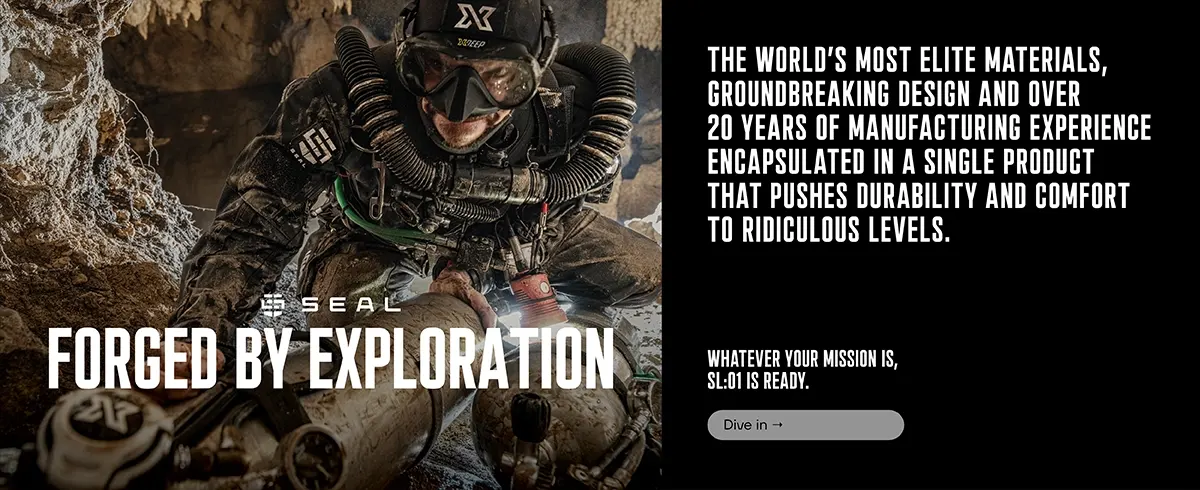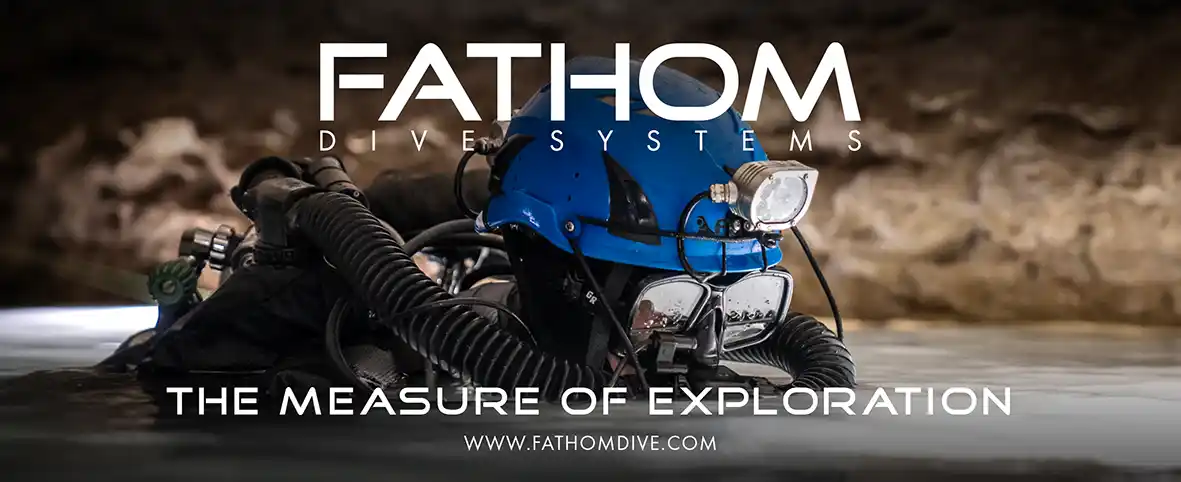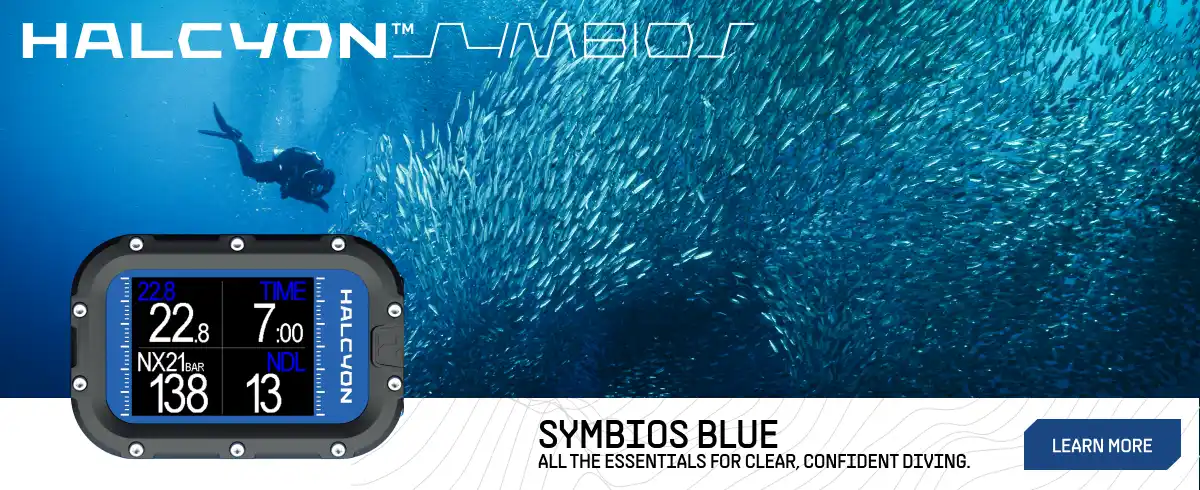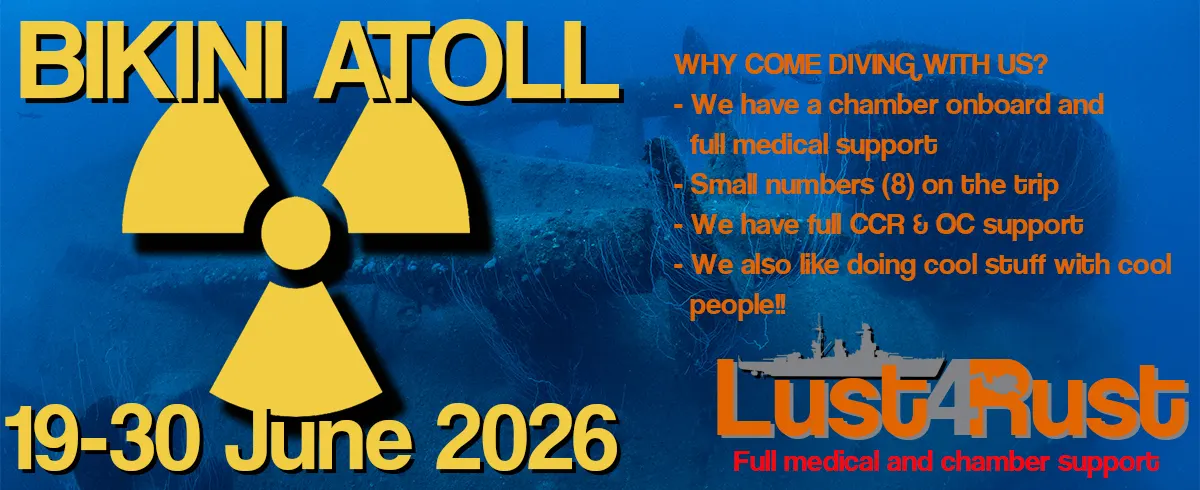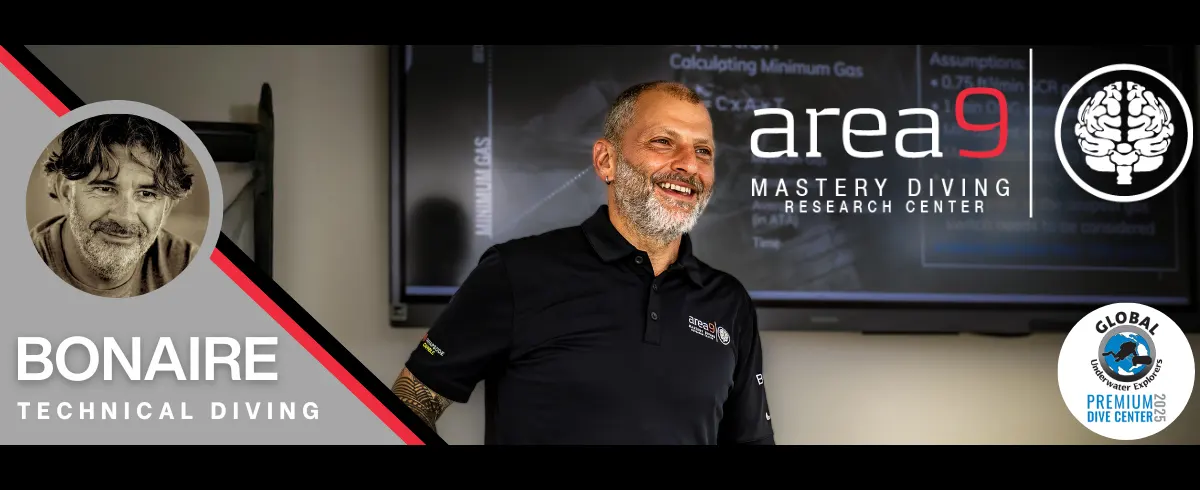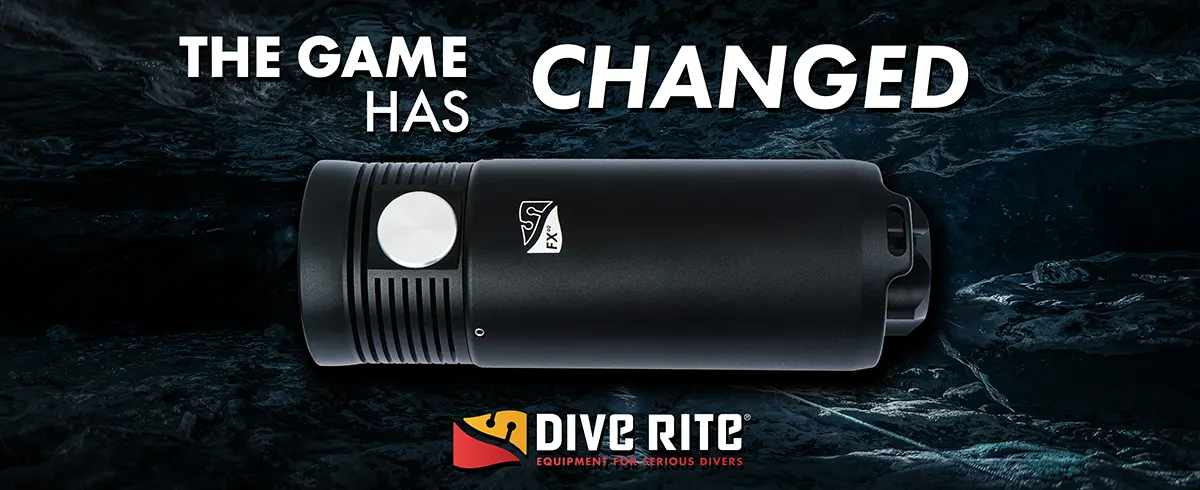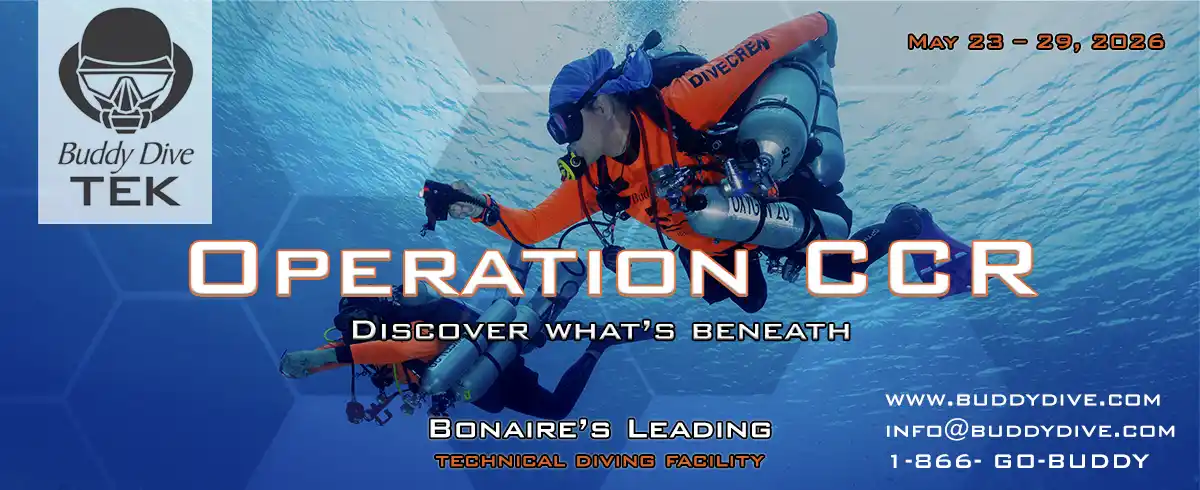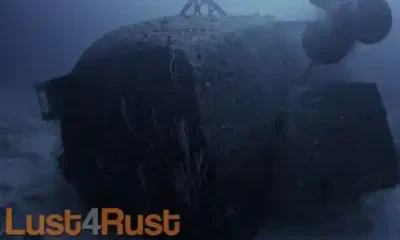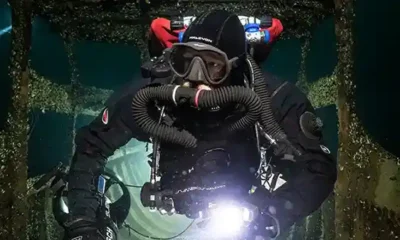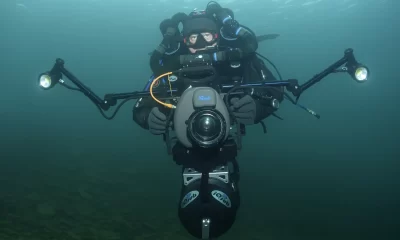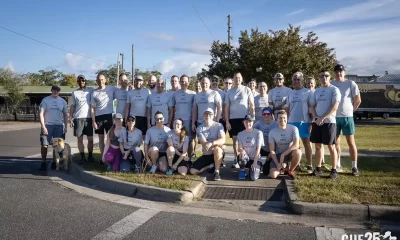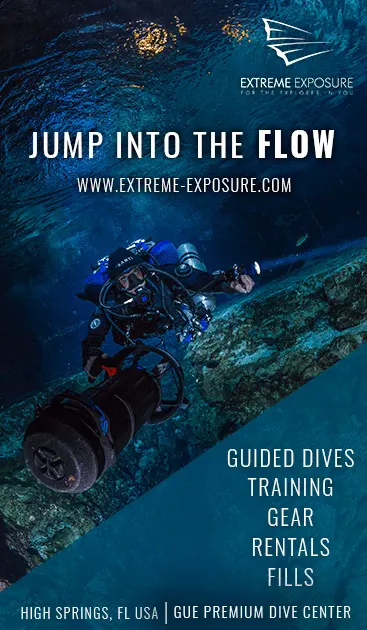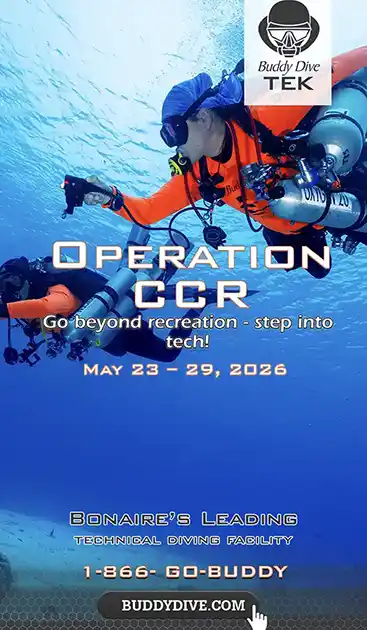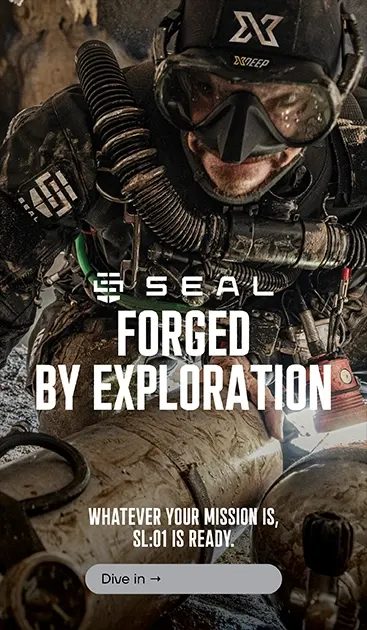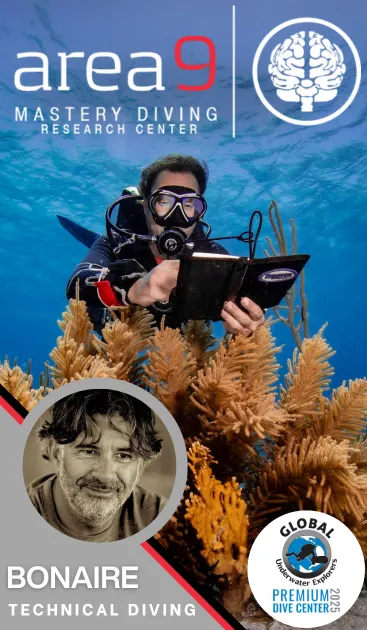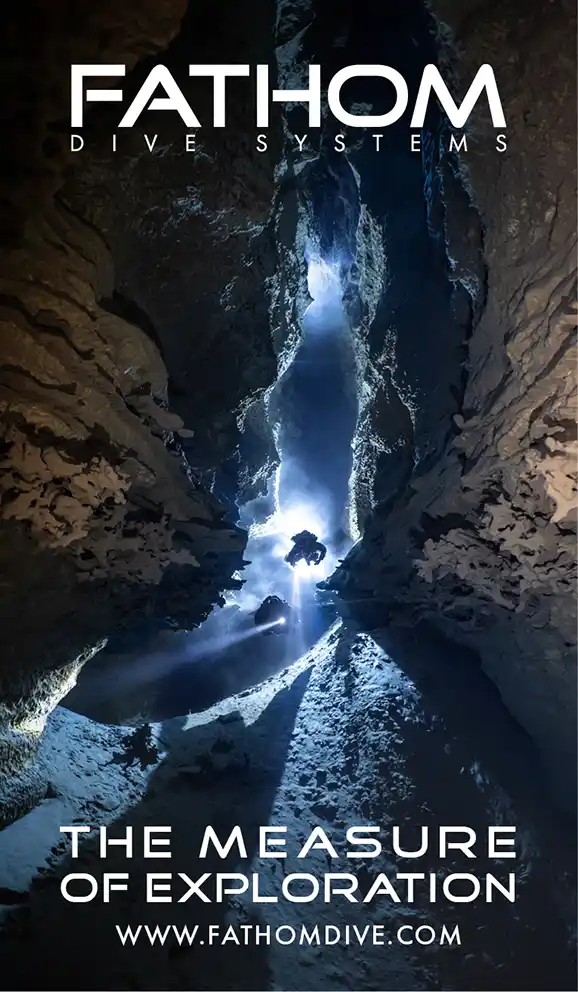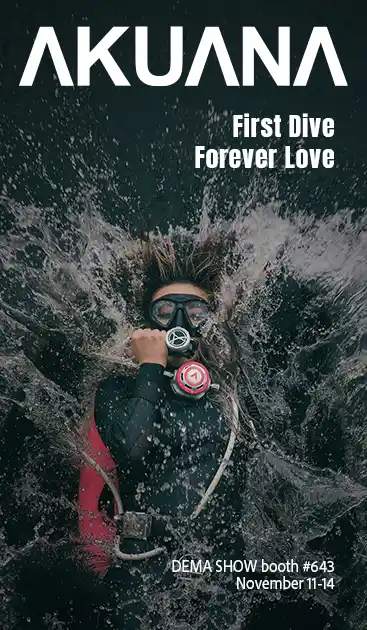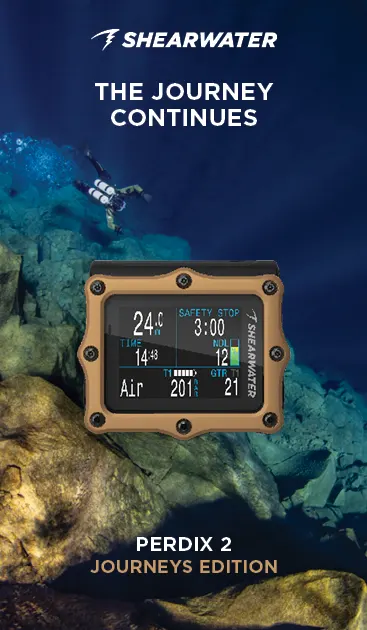Latest Features
Why I Dive a rEvo III Micro
After 16 years behind multiple rigs, the author spells out why the pint-sized rEvo III Micro still leaves every other unit in the basement collecting dust. From twin O₂ sensors and continuous CO₂ monitoring to low work-of-breathing and a drop-safe chassis, the package nails the sweet spot of safety, breathability, and travel-light practicality. It may not be the flashiest, but when caves tighten or live-aboard benches lurch, this rebreather never blinks.
By Harry Blank. Photos courtesy of Aire Eder, Matej Miskovic and Séverine Bar, unless noted.

I started diving rebreathers actively in 2009, and it quickly became a great passion—diving without bubbles. Today, I have several units in my basement and have dived and am certified on most well-known rebreathers.
In the early years, the market was dominated by a few manufacturers, and nearly all devices were back mounted. Over time, sidemount rebreathers emerged, though they didn’t fundamentally change the game—except for specific use cases that didn’t escape my attention either, for example, shallow caves, tight wrecks, and dual closed circuit rebreather (CCR) with rebreather back-up setups. In the last few years, a number of front mounted rebreathers have also become available.
We’ve all seen divers miss dives due to rebreather failures —or face bailout scenarios underwater-see Breaking the Loop: Here are Your Bailout Stories by Jane Ruckert in this issue! My highest priority is avoiding these two outcomes. This is much more important to me than how cool it looks and/or whether or not it can survive a fall from three stories. Obviously, the unit should appeal to you. After all, these devices are costly, and you should like it, for sure. But, to me, coolness comes from the projects I can safely dive and which wrecks and caves I can easily explore.
Also, as for durability, a rebreather needs only to survive falling off a table or bench on a dive boat—something that of course has never happened to any of us (wink). If I forget to strap down my unit,(despite clear instructions from the crew) and it topples over at the first wave, it should be able to handle that. Its ability to survive such mishaps is heavily influenced by its own weight and design and, of course, a bit of luck.
Over the years, I’ve owned several home-built and later commercially available sidemount rebreathers and have gained experience with front mounted rebreathers. I personally have a very large lung volume—8.42 liters—something I learned during an extensive post-COVID check—which gives me firsthand experience with the issue of breathing resistance in rebreathers. The counterlung in a rebreather is subject to hydrostatic laws and, depending on its placement and the device’s design, breathing effort may vary significantly. This applies to every diver; our anatomies are all different.

Over the last 16 years of diving on deep wrecks, in narrow and not-so-narrow caves, I’ve identified some key factors that, for me, have to do with expedition safety. These factors, in my view, are not brand-specific but universal and comparable. They have everything to do with diving safety and the feasibility of expeditions. I haven’t focused on specifics like controller features, although these can certainly influence a purchase decision.
First, let’s assume all closed circuit rebreathers come with a functional controller and operate normally. Most use similar amounts of scrubber material and require both diluent and oxygen.
And then, of course, any unit should be thoroughly tested and certified by a third party. A European CE mark is essential for sales in the EU and may also provide peace of mind when purchasing outside of Europe.
Finally, I’ve tried to define some generally comparable factors and listed them in order of personal importance. To that end, here’s how the rEvo III Micro fares.


CO₂ Monitoring
Unlike most units, the rEvo has a dual, interchangeable scrubber. On a typical 120–150-minute dive, the second scrubber remains unused, serving as a backup if something goes wrong with the first. The dual scrubber design allows a clever and safe way to completely use the sorb in the upper container without having to discard a “safety reserve”—in other words, unused sorb—saving ~50% on scrubber material compared to single-scrubber designs.
This is possible thanks to the rEvo Monitoring System (rMS), a scrubber monitor featuring four high-precision temperature sensors or “tempsticks” per scrubber—all tracking real-time sorb activity i.e. what % of sorb is used. It tells you precisely how much sorb has been burned. If the second scrubber has not been touched, toss only the first, move the second in the upper position. If it has been used you need to discard both, just like in any other single scrubber design.
The rMS represents a complex algorithm that calculates the remaining scrubber time based on respiration, exertion, diver-specific biodata, and gas temperature inside the scrubbers (which, in turn, is influenced by gas density and water temperature).
Post-dive, you can use the rMS data to calculate a projected scrubber time for future dives at different depths—providing confidence in whether your scrubber will last.
The algorithm of the rMS was developed by rEvo, the tempsticks are manufactured for rEvo by Shearwater in Canada. Other rebreather brands such as AP Diving use tempstick sensors not associated with rEvo.

Oxygen Monitoring
The rEvo uses five oxygen sensors depending on the configured electronics. It’s compatible with any combination of a Shearwater controller (Petrel III) and/or Shearwater NERD plus rEvo dream (HUD).
Ideally, all five sensors in use come from different production batches and are of varying ages. Statistically, five sensors minimize the risk of complete sensor failure—three out of five failing is far less likely than two out of three. The oldest or weakest sensor is replaced when the newest is six months old. This sensor rotation—which is strongly recommended by rEvo—is not only the safest option, but it’s also the most cost-effective.
I should mention that the rEvo can, of course, also be dived with only three or four sensors. It’s even possible to dive it with only one or two sensors. However, the safest option is certainly to use all five.

Redundancy:
For optimal redundancy, the backup displays (the “rEvodream” HUD or a NERD) will not share components with the primary controller. They are powered independently, and each reads separate sensors (#4 and/or #5)—which, of course, can only work with a five-sensor system.
Oxygen Display:
Besides the Shearwater main controller (which can be either a Petrel III or a NERD), the rEvo features two possible configurations of redundant displays:
- The combination of Petrel III (hardwired) and a NERD, or
- Like in the “rEvo-Expedition” version, a Petrel III plus two rEvodreams which provide a standard tri-color HUD as well as a completely independent analog display. Even in case of total electronics and HUD failure, you can still fly the rebreather back to surface manually with the rEvodreams.

Work of Breathing (WOB):
In my experience, the rEvo has one of the best measured WOBs on the market—both inhalation and exhalation. It breathes so naturally that you forget it’s there. Only a rebreather with excellent WOB enables truly relaxed, natural breathing. Poor WOB increases the risk of CO₂ retention and impairs off-gassing—this is critical!
Weight:
The rEvo Micro (Expedition version) weighs 15.9 kg/35 lb dry plus 2.7 kg/6 lb of Sofnolime. With two steel 3L cylinders (~10 kg/22 lb), you’re at ~28.6 kg/63 lb dive-ready.
I don’t need much added weight; the rEvo’s low internal volume (and compact scrubber located within the counterlung) reduces buoyancy. In wetsuits, many divers even switch to lighter tanks for trim.
More importantly, a lighter unit protects your back and joints—and after a dive, especially after long decompressions, you must avoid straining (e.g., Valsalva maneuvers, heavy lifting). Carrying and lifting 50–70 kg/110–154 lb post-dive can be dangerous.
Size:
The rEvo Micro is compact—54 cm/21 in tall (with handle), 35 cm/14 in wide, 22 cm/9 in deep—small enough to fit into a sturdy suitcase and stay under 21 kg for air travel. No oversized sports baggage, no questions, no theft risk. See: rEvo Technical Specs (PDF)
Since its counterlung is protected in a titanium frame, it won’t get punctured during rough RIB rides (or on the baggage carousel). After the dive, the exposed counterlung can dry completely.

Ease of Pre- and Post-Dive Preparation
Pre- and post-dive setup is fast, simple, and safe—you see what you’re doing. But checklists are essential. rEvo provides “build” and “closed check” lists and provides a waterproof pre-dive checklist available in many languages.

Reliability:
In all my years with the rEvo, I haven’t missed a single dive. That may be luck, but it’s also the result of design. During assembly, the rEvo has only three connection points which are sealed with O-rings: the lid and the two threads of the breathing hose. Not much that can go undetected there.
Bailout Valve (BOV)
The rEvo BOV is lightweight, purpose-built, and CE-compliant when used with the unit—unlike many aftermarket combinations. In tandem with the Mouthpiece Retaining Strap (MRS) (both are strongly recommended by the Rebreather Education & Safety Association (RESA) and, moreover, are a CE requirement), diver safety is significantly increased. Some divers dislike headstraps; to that, I say, “Read this paper on MRS safety in unconscious divers.”
Even a mere 25% increase in survival rate might well make the effort worthwhile.
Water Traps and Leaks
Like all CCRs, the rEvo’s exhale counterlung acts as a water trap. But any continuous leak in a rebreather will eventually soak the scrubber and sensors, causing a mandatory bailout. Claims of “recovering” a flooded unit must be taken cautiously—wet sensors give unreliable readings, and wet scrubber performance is compromised. During a rebreather flood, you never know just how wet your valuables are. Plus, you risk a very unhealthy caustic cocktail—it’s not something you want to endure during a long deco hang.
Manufacturer Service
In my experience, support from rEvo Belgium is exceptional—even on weekends, someone usually replies to emails. Spare parts can arrive in three days, even in remote places.
Consumables:
I’ve heard some people say operational costs shouldn’t matter for rebreather divers, but this statement doesn’t tell the full story. Everyone wants to maximize scrubber life and avoid discarding operational sensors.
While safety must come first, the rEvo helps you reduce costs with:
- Scrubber savings thanks to the rMS monitor—you know how much sorb is used.
- Two CE-approved scrubber materials: Sofnolime 797 and Intersorb 812—useful if one isn’t available at a remote destination
The rEvo-specific five-sensor rotation system offers both high redundancy and cost efficiency; I’m not always buying three new sensors at once, and the “old” ones (which often aren’t really old or inoperative) are still being used. Of course, if a sensor is starting to fail, it needs to be replaced immediately, old or new.

Conclusions
I dive the rEvo not because it’s the most beautiful, not because it’s the most high-tech, not because it’s the most common, and certainly not because it’s the newest craze. I dive it because, after 16 years of rebreather diving—16 years spent training and guiding people with various models, exploring caves and deep wrecks, diving from liveaboards and small RIBs—the rEvo has never let me down.
For me, at least for now, the rEvo is the ideal compromise between: maximum safety through sensor redundancy and CO₂ monitoring, outstanding breathing performance (WOB), compactness, lightweight build, robust construction–without being overbuilt—and practicality in use, service, and logistics.
In diving, there’s no perfect system—no absolute best. But with the rEvo, I’ve found a system that I trust, I understand completely, is suitable for any scenario (diving deep open water, caves, or wreck penetrations) and that allows me to focus on the dive itself rather than on the equipment.
And that, after all, is what it should be about: Being free to explore while knowing my equipment will reliably support me—even when things get tight, deep, dark, or complicated.


Diving since 1992, Harry Blank is an avid cave and wreck diver as well as a technical wreck and CCR instructor. As a trainer for IANTD, SDI/TDI, and SSI, he dedicates his time to teaching technical diving in the cold and deep waters of southern Germany via his company, HBdiving. In his spare time, you can find him in his Dual-CCR configuration on the wrecks of the Mediterranean or in mines and caves all over Europe. In the past 13 years, Harry has also been writing regularly for the tek-diving print magazine “WETNOTES“ which is published every three months in German.


